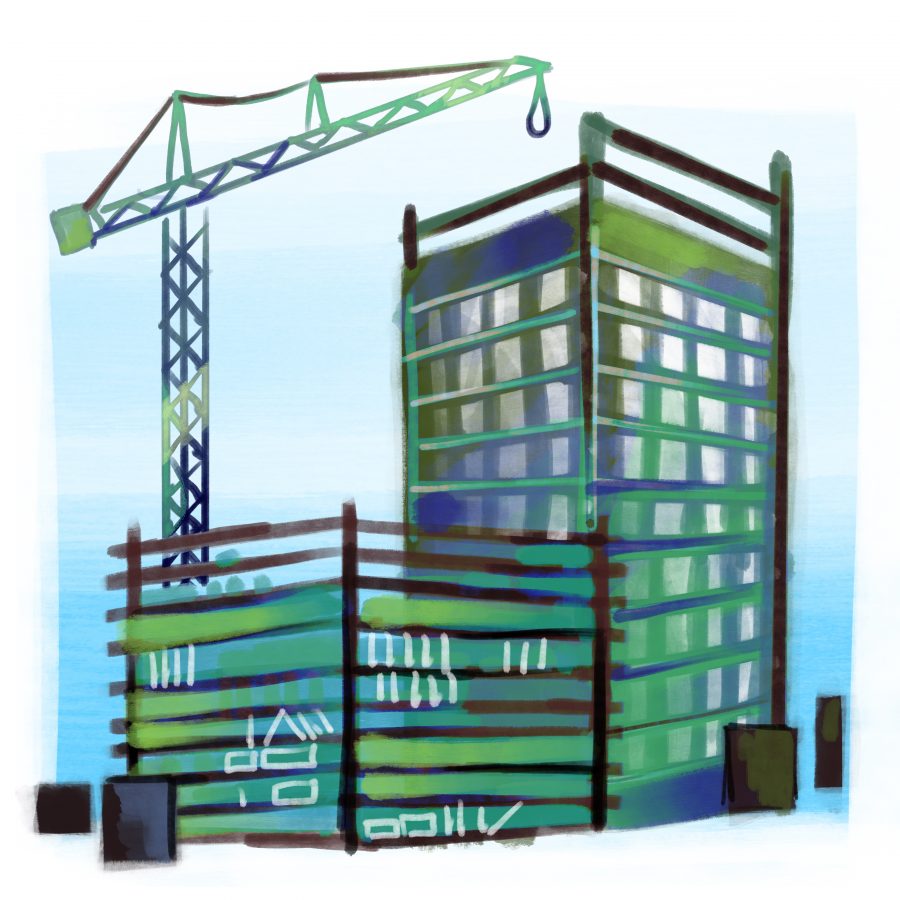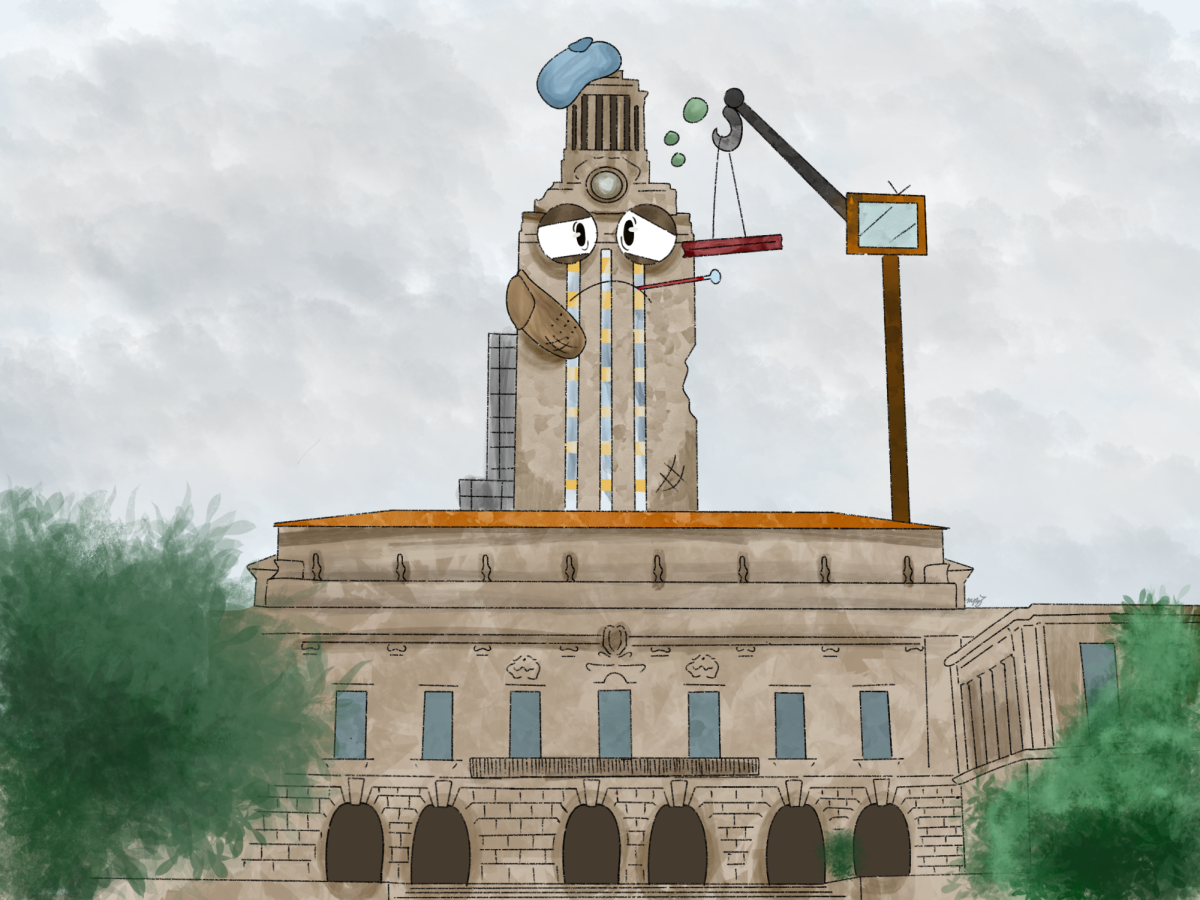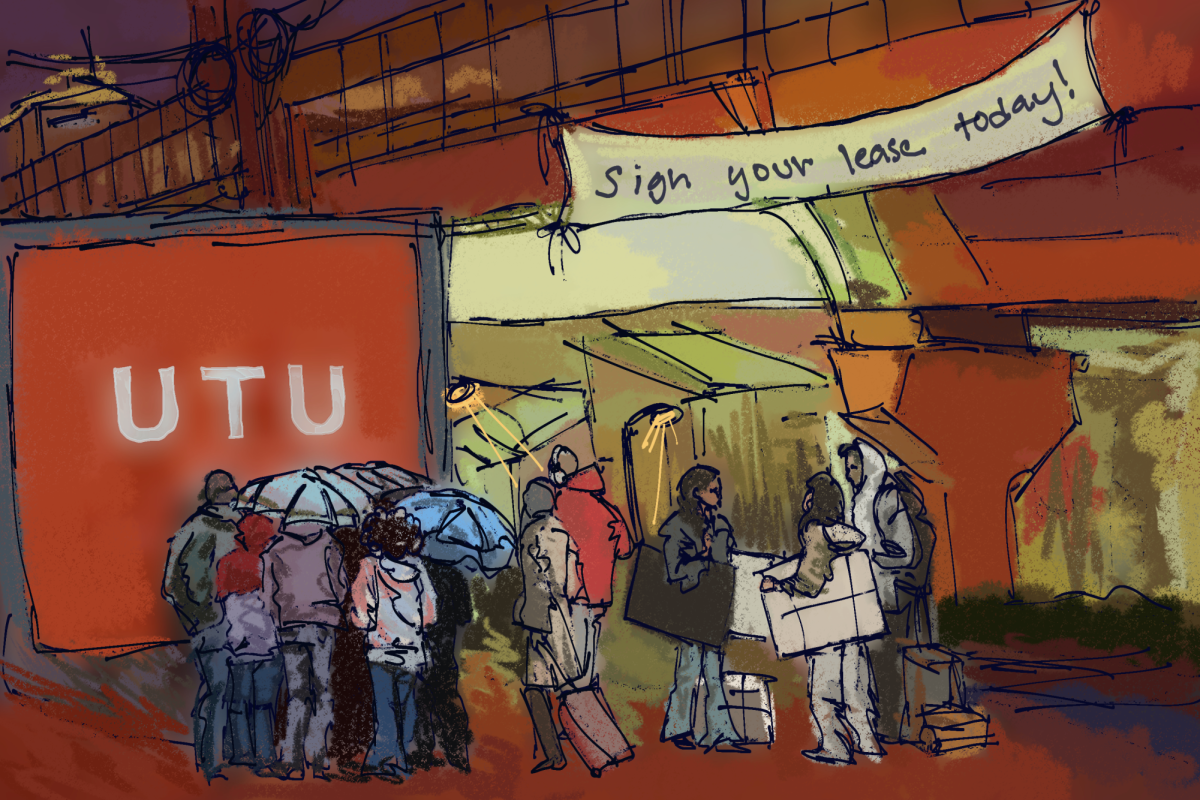Construction is part of life at UT, and most students understand that it is for the betterment of our campus. However, as unexpected construction sites pop up, students must hastily renavigate their typical routes to arrive at their classes, meetings or workplaces on time. Although the end product of construction is usually desirable, UT should notify students of new construction sites that will potentially disrupt areas of foot traffic.
Management junior Ariel Benson often uses navigation systems such as Google Maps to get to buildings she’s unfamiliar with. However, Google Maps doesn’t account for unexpected construction sites. Since there is no construction notification system in place for students, Benson often gets caught off guard by construction, has to take a longer path to her destination and runs the risk of being late.
The presence of unforeseen construction sites is often an irritating inconvenience. But for students with physical disabilities, it becomes a gross impediment.
“I used to look at (unexpected construction) positively,” says finance senior Amie Jean. “Although construction can get in the way, it’s a sign that our school is moving forward.”
According to Jean, unexpected construction didn’t adversely affect her until she was diagnosed with multiple sclerosis and started using a wheelchair. Then, construction “made traversing the campus a lot harder.”
Caroline Graves, government senior and president of the Disability Advocacy Student Coalition, notes in an email that unexpected construction often obstructs known accessible routes. The implementation of a construction alert system would help students with disabilities know “what to work around, saving them the stress of suddenly finding out their typical accessible route no longer works.”
UT already has notification systems in place for issues of safety and safety-siren testing on campus. According to Robin Richards, emergency preparedness coordinator, UT uses a mass-communication system called Everbridge to notify students via email and text message in these instances. Students are automatically enrolled in the system, and it works with the University database to access students’ phone numbers and emails. While Everbridge is mainly marketed as an emergency communication system, it has been used for other matters.
During Philadelphia’s 2018 Super Bowl championship parade, Everbridge was used to alert participants of street closures. The town of Northbrook, Illinois, also uses the system for “routine public service announcements like road closures” and “construction updates.” While UT does notify students of construction via email, this mainly pertains to construction sites that disrupt vehicular traffic. Since UT already uses Everbridge for campus notifications, it could easily be used to notify students of new construction sites that disrupt nonvehicular traffic.
Laurie Lentz, communications manager for Financial and Administrative Services, said in an email that UT is trying to improve construction communication, but this is challenging due to the “dozens of active projects” across campus and the rapid changes that may occur on construction sites. Yet Parking and Transportation Services has been able to efficiently notify students of construction blockages in areas of road traffic. Surely UT can do this for areas of foot traffic as well.
Construction is a means to a better and more beautiful end. We all want a state-of-the-art campus, but the University should ensure that students encounter minimum inconvenience and take measures to ameliorate the inaccessibility construction often creates. If UT really wants to improve construction communication, then it should seriously consider implementing a notification system for its students.
Oyenubi is a social work junior from Temple. Follow her on twitter @mazing__G.


















